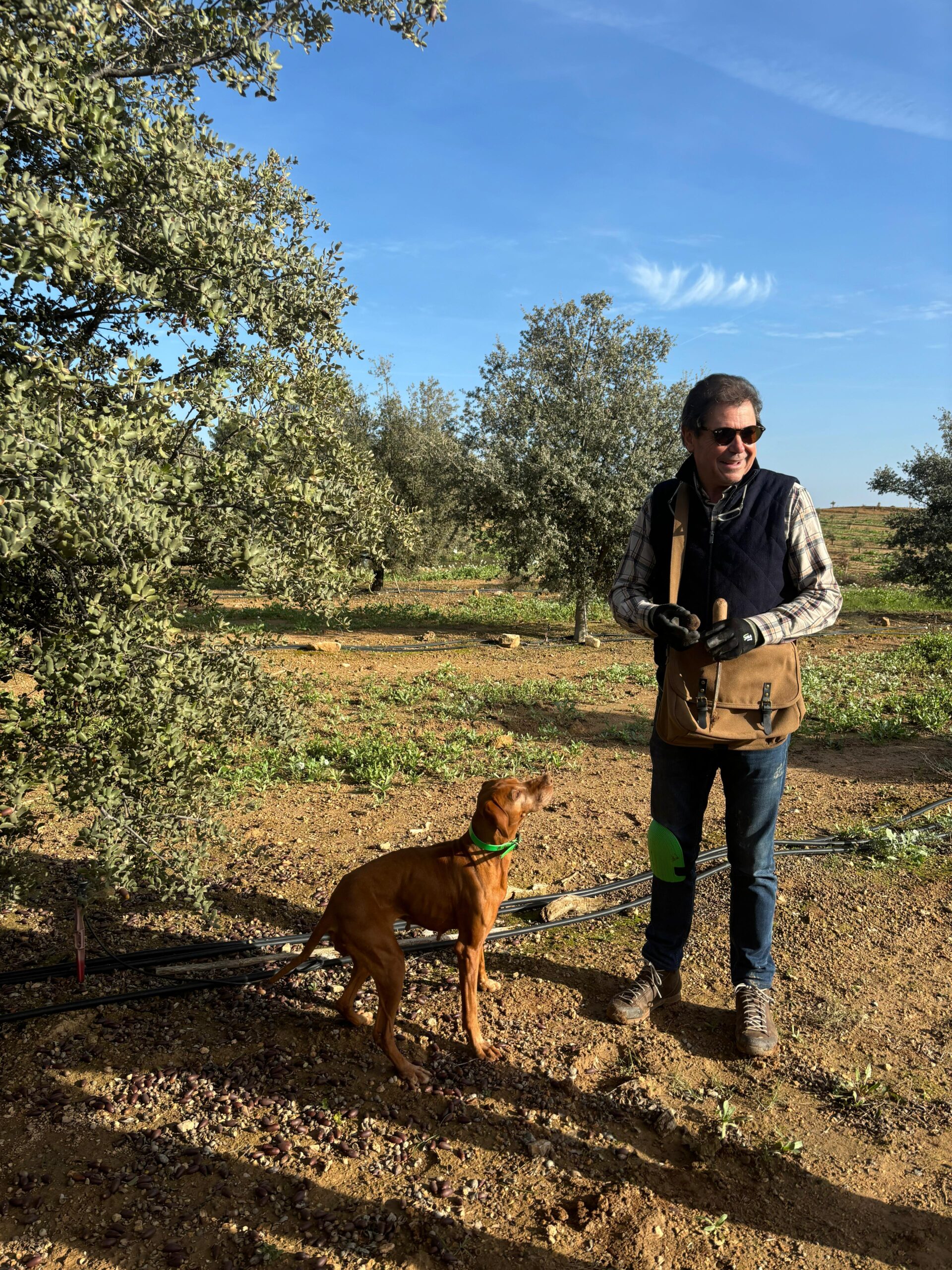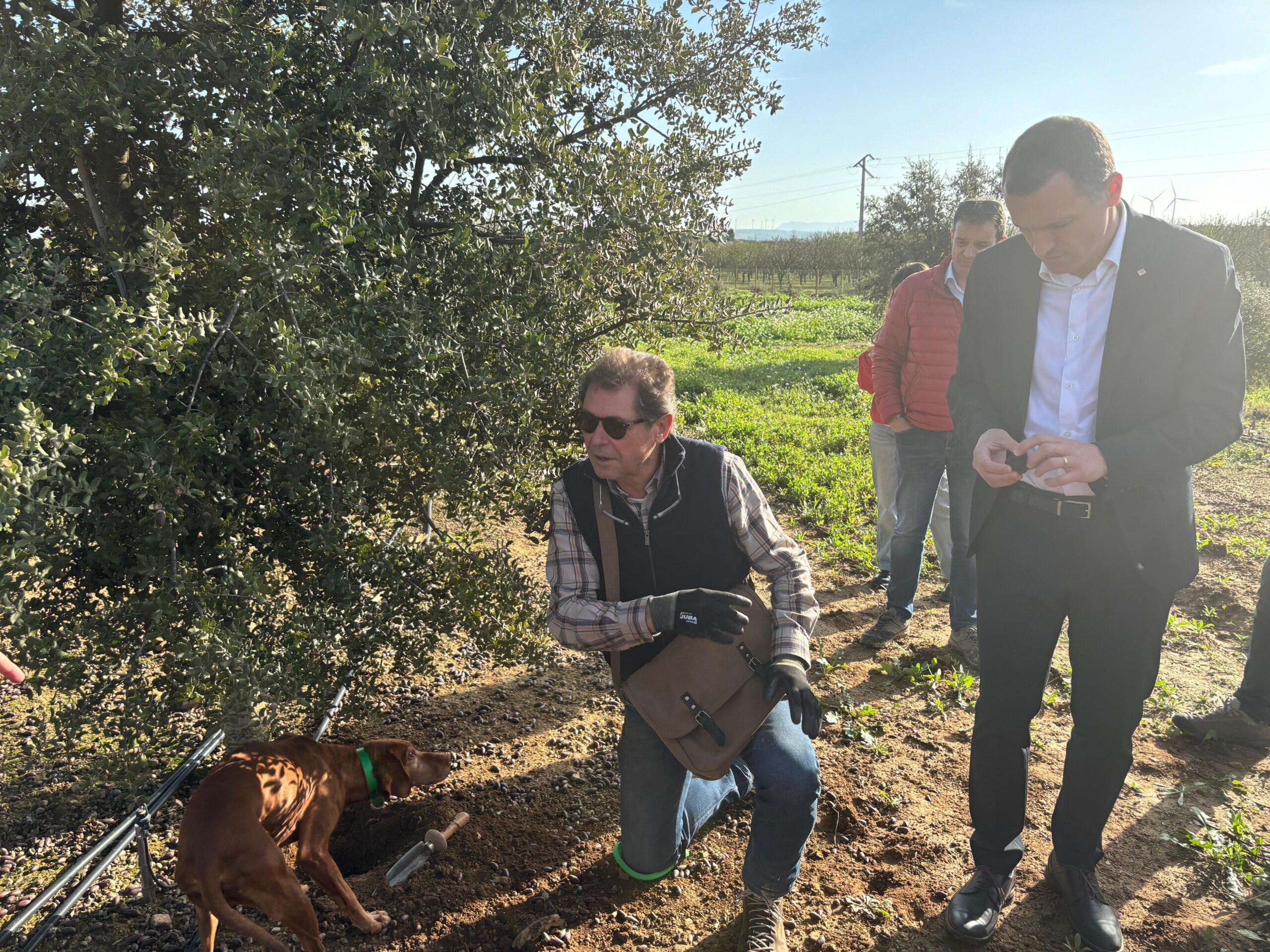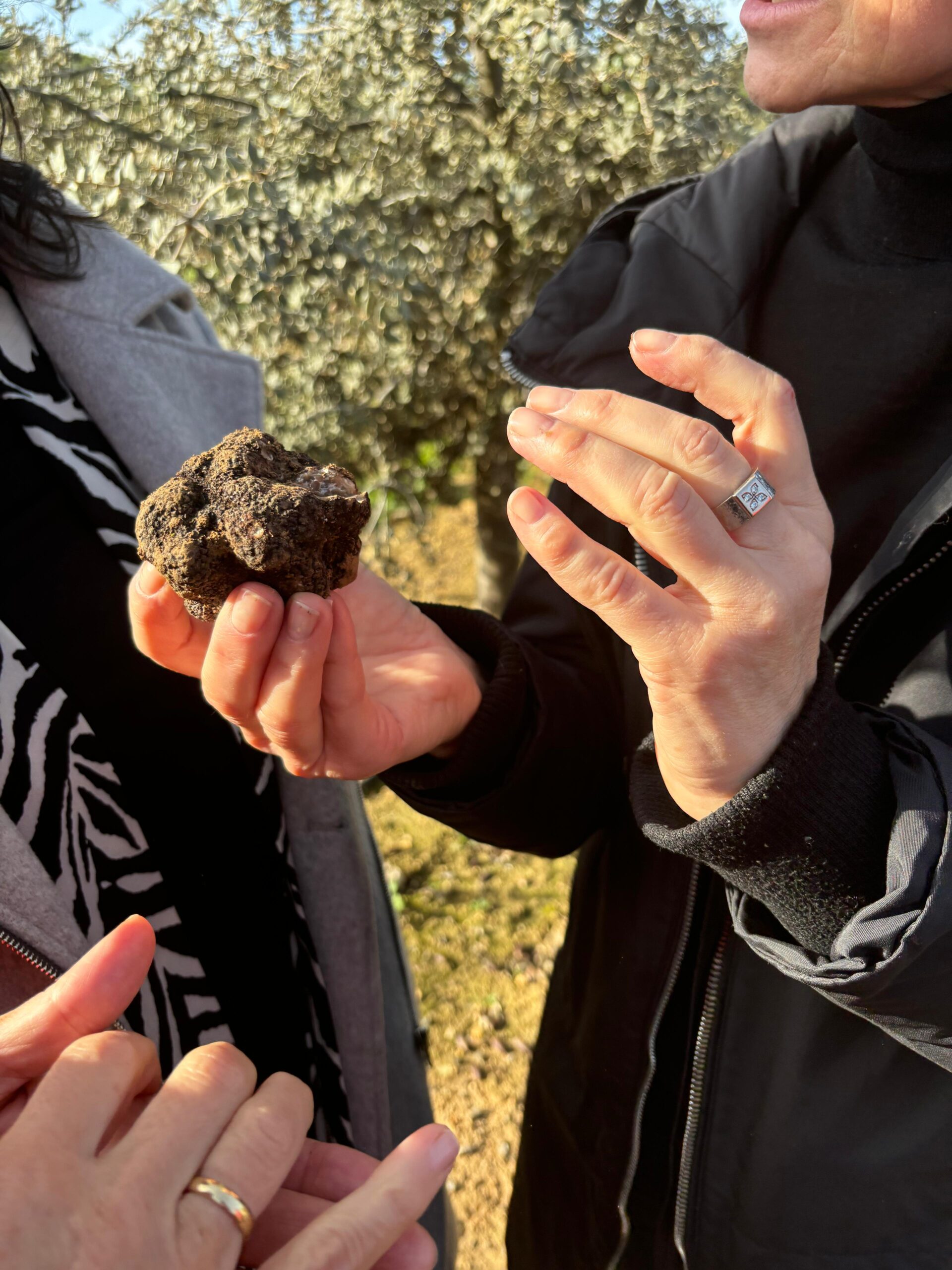-
- The conseller of Agriculture highlights the demonstration project on the black truffle by Agrotecnio and the Centre of Forestry Science and Technology of Catalonia.
- Funded by the Department of Agriculture, the activity is being carried out at the Maials experimental plant and in other productive plantations in the Pre-Pyrenees.

The conseller of Agriculture, Òscar Ordeig, has highlighted the DIPROTES project that applies precision agriculture to truffle cultivation as a project that ‘makes us move towards a model that is increasingly more efficient environmentally, socially and economically’. DIPROTES (Digitalisation for Efficient and Sustainable Truffle Production) is a collaborative project between the CERCA Agrotecnio centres and the Centre for Forestry Science and Technology of Catalonia (CTFC).
Conseller Ordeig visited the experimental farm of Devesa de Maials, where part of the work of the demonstration activity is being carried out, along with other productive plantations in the Pre-Pyrenees. The ultimate goal of this demonstration activity is to improve the production of the black truffle through digitisation and 3D monitoring of the plantations, in order to increase productivity, efficiency and sustainability.
The DIPROTES project started in June 2024 and will end two years later, in May 2026. The aim of the project is to adapt and apply current precision agriculture tools to black truffle cultivation. Proximity and remote sensing systems will be used for tree and soil characterisation. GNSS receivers will also be used to geo-reference the collected truffles. The data collection and subsequent analysis will then be synthesised and transferred to the sector.
As CTFC researcher Daniel Oliach explained during the visit, ‘truffle producers will be able to have data on production, pruning management, irrigation and soil work in order to improve their production processes’. For his part, Àlex Escolà, Agrotecnio researcher, stressed that ‘these technologies have never been applied in commercial truffle farms and even less in plots, but Agrotecnio has significant experience in their use in other fruit and extensive crops’.
The information generated from these precision agriculture tools will allow for the adjustment of productive resources and a more efficient use, such as a more effective management of water and soil.
The president of the Association of Truffle Producers of Catalonia, Carme Vivó, highlighted the impact that the conclusions of this demonstration activity could have on the sector. ‘The resulting management recommendations will surely lead to an improvement in production processes and better profitability for Catalan farms’.
Vivó also highlighted the social aspect of the project: ‘The results of this research, as well as being able to improve the business of current truffle producers, can also motivate young entrepreneurial producers to start growing truffles and can be the basis for new business models that will help revitalise the rural world’.
The project has the support of the Association of Truffle Producers of Catalonia, the Spanish Federation of Mushroom and Truffle Entrepreneurs, the National Association of Precision Agriculture and the Cluster of machinery and means of agricultural production of Catalonia.
4 Agrotecnio projects financed
During the visit to the Maials farm, the Minister announced that the Department of Agriculture has earmarked €5.5 million for 114 research projects to improve efficiency and agricultural and livestock management in terms of sustainability and health. In addition to DIPROTES, Agrotecnio has obtained funding for three other projects: ‘Bridging the digital divide. Detection and control of weeds in maize and cereal with precision agriculture’, “Camelina cultivation in irrigated systems” and “Automatic feeders and artificial intelligence to analyse the feeding behaviour of fattening pigs and their efficiency”.




